Splash Screen
Chapter Introduction
Section 1: China Reunified
Section 2: The Mongols and China
Section 3: Early Japan and Korea
Section 4: India After the Guptas
Section 5: Civilization in
Southeast Asia
Visual Summary
Chapter Menu
Angkor Wat is a symbol of Cambodia and appears on its flag. First built by the Khmer as a Hindu temple, it has served as a Buddhist shrine since the fourteenth century. Although most of the walls have carvings of Hindu stories, there are images of the Buddha. In this chapter you will learn about the changes in the Asian world.
• How does the architecture in your city or state relate to its history?
• Which structures have been changed based on their use?
Chapter Intro
How does architecture record history?
Chapter Intro
Chapter Intro
China Reunified
What was the result of the collapse of the Han dynasty?
Chapter Intro 1
The Mongols and China
What do you think were strengths of the Mongolian military?
Chapter Intro 2
Early Japan and Korea
How did Japan’s geography affect its development?
Chapter Intro 3
India After the Guptas
Which religions had a major impact in Indian society?
Chapter Intro 4
Civilizations in Southeast Asia
Which civilizations most influenced Southeast Asia?
Chapter Intro 5
Chapter Preview-End
The BIG Idea
Order and Security After centuries of chaos and civil war, three dynasties unified China, bringing peace, stability, and technological progress.
Section 1-Main Idea
• scholar-gentry
• dowry
Content Vocabulary
• period
• complexity
Section 1-Key Terms
Academic Vocabulary
• Changan
• Sui Yangdi
• Marco Polo
• Tibet
• Tang Xuanzang
• Wu Zhao
• Uighurs
• Hangzhou
Section 1-Key Terms
People and Places
Do you think a written test should be required for all jobs?
A. Yes
B. No
A. A B. B
0%
0%
Section 1-Polling Question
Three Dynasties
The Sui, Tang, and Song dynasties restored peace to China in between periods of chaos and disorder.
Section 1
Three Dynasties (cont.)
• In 581 the Sui dynasty was established. The
Sui dynasty is known for unifying China under one emperor.
• Sui Yangdi was the second ruler of the dynasty. He was a cruel ruler, and used forced labor to build the Grand Canal, connecting the Huang He (Yellow River) and Chang Jiang (Yangtze River).
Empires in China, 581–1279
Section 1
• Sui Yangdi’s oppressive policies led to a rebellion that ended the empire.
Three Dynasties (cont.)
• The Tang dynasty came to power in 618.
Tang rulers restored civil service exams for government positions.
• The Tang dynasty extended the borders of
the empire to Tibet in the southwest.
Section 1
• Emperor Tang Xuanzang and other Tang rulers were unable to prevent plotting and corruption in the government.
Three Dynasties (cont.)
• Tang rulers hired Uighurs to put down
Section 1
rebellions but continued unrest led to the fall of the dynasty in 907.
Three Dynasties (cont.)
• In 960 the Song dynasty came to power. The Song ruled during a time period of economic prosperity and cultural achievement.
• Because of threats from nomadic warriors to
the north, the Song moved their capital farther south to Hangzhou.
Dynasties of China
Section 1
Why did the Tang dynasty hire Uighurs?
A. To build the Grand Canal
B. To build the Great Wall
C. To defend the empire from nomadic warriors
D. To defend the empire
0%
0%
from rebellions
Section 1
A. A B. B C. C 0% 0% D. D
Government and Economy
For 700 years, the Chinese economy grew in size and sophistication.
Section 1
Government and Economy (cont.)
• During the rule of the Sui, Tang, and Song dynasties, the Chinese government and economy grew in size and complexity.
• The Song government weakened the power
Section 1
of large landholders and helped poor peasants get their own land, which led to an abundance of food.
Government and Economy (cont.)
• The economy was still based on agriculture,
but technological advances led to development of steel and gunpowder.
• International and domestic trade also
increased and the Silk Road was renewed.
• Changan became the wealthiest city in the
Section 1
world during the Tang era.
What did the Chinese not export via the Silk Road?
A. Porcelain
B. Ivory
C. Silk
D. Tea
0%
0%
Section 1
A. A B. B C. C 0% 0% D. D
Chinese Society
The political stability established by the three dynasties allowed Chinese society to grow in complexity.
Section 1
Chinese Society (cont.)
• In the late 1200s, the Italian merchant Marco
Polo described Hangzhou as one of the largest and most beautiful cities in the world.
Section 1
• Chinese society developed into a complex mixture of landowners, free peasants, sharecroppers, and landless laborers.
Chinese Society (cont.)
• Most significant was the rise of the landed gentry, called the scholar-gentry, who became the political and economic elite of Chinese society.
• Few women had any power. An exception
was Wu Zhao, known as Empress Wu, who ruled for half a century.
Section 1
• When a woman was married, her family was expected to give a dowry to the husband. Poor families sold their daughters.
Which of the following is an example of a dowry?
A. Civil service exam
B. Sharecropper
C. Money
D. Block printing
0%
0%
Section 1
A. A B. B C. C 0% 0% D. D
Section 1-End
The BIG Idea
Ideas, Beliefs, and Values Shifts in religious belief caused major changes in the organization of Chinese society, which were intensified when the Mongol Empire conquered China.
Section 2-Main Idea
• khanate
• porcelain
• neo-Confucianism
Content Vocabulary
• acquired
• vision
• available
Section 2-Key Terms
Academic Vocabulary
• Mongolia
• Genghis Khan
• Gobi
• Kublai Khan
• Beijing
• Li Bo
• Du Fu
Section 2-Key Terms
People and Places
Military innovations are necessary to become an empire.
A. Agree
B. Disagree
A. A B. B
0%
0%
Section 2-Polling Question
The Mongols
The Mongols created the world’s largest land empire by conquering all of China.
Section 2
The Mongols (cont.)
• The Mongols under Genghis Khan created the largest land empire ever. The Mongols were a pastoral people from the Gobi in what is present-day Mongolia.
• In 1206 Genghis Khan was elected the ruler of the Mongols. He immediately devoted his life to conquest.
• Upon Genghis Khan’s death in 1227, the
empire was divided into khanates.
Mongol Empire, 1294
Section 2
The Mongols (cont.)
• In 1279, Kublai Khan, the grandson of
Genghis Khan, conquered the Song dynasty and established the Yuan dynasty in China.
• Kublai Khan established his capital at
Khanbalik, in what is present-day Beijing.
• While the Mongols were successful in ruling China, they were unsuccessful in attacking Southwest Asia.
The Mongol Dynasty in China
Section 2
The Mongols (cont.)
• The Mongols were finally unseated by
Section 2
internal instability, political corruption, and excessive military spending. In 1368 an uprising by Zhu Yuanzhang led to the Ming dynasty.
Why were the Mongols unsuccessful in attacking Southwest Asia?
A. Their cavalry charges were
not effective in tropical regions.
B. They did not have the navy
to support long wars.
C. A disease epidemic ravaged
the Mongolian army.
0%
0%
A. A B. B C. C 0% 0% D. D
D. Kublai Khan was killed while fighting in Southwest Asia.
Section 2
Religion and Government
Between the Han and Yuan dynasties, religion’s role in Chinese government changed.
Section 2
Religion and Government (cont.)
• Buddhism and Daoism became increasingly
popular during the Tang dynasty.
• Buddhist monasteries acquired thousands
of acres of lands and serfs.
Section 2
• Buddhists taught that everything in the material world is an illusion. This was contrary to Confucian teachings of devotion to family and work.
Religion and Government (cont.)
Section 2
• Beginning in the Song dynasty, government officials supported neo-Confucianism, which stated that the world is real and that satisfaction comes from participation.
Why was Buddhism unpopular with the Chinese government?
A. It taught about equality
for everyone.
B. It taught that rebellions
were justified.
0%
0%
0%
0%
C. The Buddhists were mostly non-Chinese.
D. It was contrary to Confucian
A. A B. B C. C D. D
beliefs of devotion to family and work.
Section 2
A Golden Age in Literature and Art
With the invention of printing, a golden age of literature and art emerged in China.
Section 2
A Golden Age in Literature and Art (cont.)
• The golden age of Chinese literature occurred during the Tang and Ming dynasties.
• The invention of the printing press helped to make literature more available to people.
• Poetry, as expressed by Tang-era poets
Section 2
Li Bo and Du Fu, was especially important to Chinese literature.
A Golden Age in Literature and Art (cont.)
• Painting was an important art form during imperial China. Influenced by the Daoist vision, landscape painting reached its height.
• Tang artisans perfected the making of
Section 2
porcelain.
What inspired the Chinese painters to paint scenes of nature?
A. Buddhism
B. Daoism
C. Confucianism
D. Hinduism
0%
0%
Section 2
A. A B. B C. C 0% 0% D. D
Section 2-End
The BIG Idea
Physical Geography The geography of Japan, a string of islands, and of Korea, a peninsula bordering China, have had a huge impact on their respective histories.
Section 3-Main Idea
• samurai
• daimyo
• Bushido
• Shinto
• shogun
• Zen
Content Vocabulary
•
revenue
• code
Section 3-Key Terms
Academic Vocabulary
• Ōsaka
• Kyōto
• Shōtoku Taishi
• Minamoto Yoritomo
• Murasaki Shikibu
• Yi Sŏng-gye
Section 3-Key Terms
People and Places
Centralized power is the only way a successful government can govern.
A. Agree
B. Disagree
A. A B. B
0%
0%
Section 3-Polling Question
Early Japan
Japan’s history has been marked by power struggles between rulers and independent families.
Section 3
Early Japan (cont.)
• Early Japanese society was made up of a small ruling class of aristocrats and a large population of farmers.
• The people lived in clans in the Yamato Plain near what are now the cities of Ōsaka and Kyōto.
• Prince Shōtoku Taishi tried to unify the
clans of Japan. He emulated the Chinese system of government and established centralized power.
Early Japan
Section 3
Early Japan (cont.)
• In the Nara Period, the emperor began to
call himself the “Son of Heaven.”
• The aristocrats kept tax revenues for
themselves, and the centralized national government lost power and influence.
• During the Heian Period there was little
centralized power, so the aristocratic families sought the protection of samurai.
Mongol Campaigns, 1200s
Section 3
Early Japan (cont.)
• The samurai lived by a warrior code
known as Bushido.
• Minamoto Yoritomo defeated the rival clans and set up a centralized government under the control of a shogun.
Section 3
• Fighting the Mongols put a strain on the political system and the shogunate was overthrown.
Early Japan (cont.)
Section 3
• The collapse of central rule coincided with the rise of daimyo. The noble families constantly warred with each other, and by 1500, Japan was in chaos.
What gave rise to the samurai?
A. The lack of soldiers
B. The lack of central
authority
C. The need to protect the
emperor from internal strife
0%
0%
0%
Section 3
D. The need to protect Japanese trade A. A B. B C. C 0% D. D
Life in Early Japan
Japan’s small size and relative isolation have had a major effect on the development of its economy, religion, and culture.
Section 3
Life in Early Japan (cont.)
• Farming provided the basis of the Japanese economy, although only about 11% of the land was tillable.
• Trade between regions began to increase.
Japan traded raw materials and manufactured items in return for silk, porcelain, books, and copper coins.
• In Japanese society, women were
Section 3
subordinate to men. Aristocratic women were active in society and the arts.
Life in Early Japan (cont.)
• Japanese religion was centered around the worship of spirits and became known as Shinto.
• Among aristocrats, a sect of Buddhism
known as Zen became popular. Zen would be adopted by the samurai as well.
Section 3
• During the history of early Japan, it was considered beneath men to write fiction. Thus, women such as Mursaki Shikibu rose to prominence.
Which of the following groups accepted Zen Buddhism in early Japan?
A. Samurai
B. Merchants
C. Peasants
D. Women
0%
0%
Section 3
A. A B. B C. C 0% 0% D. D
The Emergence of Korea
The early history of Korea was marked by the presence of dominating neighbors.
Section 3
The Emergence of Korea (cont.)
• Korea is a mountainous peninsula. Its
proximity to China and Japan has greatly influenced Korean history.
• The Koryo dynasty emulated Chinese
political systems.
• The Koryo accepted Mongol rule in the
thirteenth century. This led to the fall of the dynasty.
• In 1392 Yi Sŏng-gye seized power and
Section 3
founded the Yi dynasty.
Which of the following groups did not influence Korean history?
A. Mongols
B. Persians
C. Japanese
D. Chinese
0%
0%
Section 3
A. A B. B C. C 0% 0% D. D
Section 3-End
The BIG Idea
Ideas, Beliefs, and Values When Islamic peoples conquered much of India, tension arose between the Muslim rulers and the majority Hindu population.
Section 4-Main Idea
• Theravada
• Mahayana
Content Vocabulary
•
retained
•
traditional
Section 4-Key Terms
Academic Vocabulary
• Ghazna (Ghaznī)
• Mahmūd of Ghazna
• Rajputs
• sultanate of Delhi
• Timur Lenk
• Samarqand
• Moguls
• Dandin
Section 4-Key Terms
People and Places
Do you think religion, society, and culture are impacted by one another?
A. Yes
B. No
A. A B. B
0%
0%
Section 4-Polling Question
The Impact of Religion
Buddhism, Hinduism, and Islam all influenced the development of India.
Section 4
The Impact of Religion (cont.)
• The people of India retained a widespread acceptance of Buddhism for centuries. People did not always agree on the teachings of Buddha, and split, in Buddhism occurred.
• The followers who believed Buddhism was a life philosophy became known as the school of Theravada.
Buddhism, Hinduism, and Islam in India
Section 4
The Impact of Religion (cont.)
• The followers who believed Buddhism was a
religion became known as the school of Mahayana.
• Buddhism eventually lost influence in India although it was transported abroad with much success.
• Early in the eighth century Arab armies
Section 4
brought Islam to northwest India. In the tenth century rebellious Turkish slaves founded the Islamic state of Ghazna (Ghaznī).
The Impact of Religion (cont.)
• In 997, Mahmūd of Ghazna attacked Hindu kingdoms to the southeast. Mahmūd’s forces defeated the Rajputs and extended Muslim power to the new state of the sultanate of Delhi.
Section 4
• Timur Lenk attacked the capital of Delhi in the fourteenth century. He massacred as many as 100,000 Hindu prisoners at the gates of the city.
The Impact of Religion (cont.)
• Timur Lenk ruled a Mongol state called
Section 4
Samarqand. His death in 1405 rid India and Asia of a tyrannical ruler and allowed the Moguls and Portuguese to gain influence in the region.
How was the reign of Mahmūd of Ghazna different from his father’s?
A. Mahmūd was tolerant of other religions.
B. Mahmūd attacked Hindu kingdoms in the south.
C. Mahmūd supported the
0%
0%
0%
0%
Hindu kingdoms in the south.
D. Mahmūd conquered the Chinese.
A. A B. B C. C D. D
Section 4
Indian Society and Culture
The ruling class of India was made up of Muslims, but some members of the Hindu population also prospered. The rich culture of India was reflected in its art, literature, architecture, and technological advances.
Section 4
Indian Society and Culture (cont.)
• Muslim rulers in India maintained strict
separation between Muslims and Hindus. This relationship led to suspicion and distrust between the two groups.
• India’s location and traditional trade routes
made it a center for trade between Southwest and East Asia.
Section 4
• Between 500 and 1500, religious architecture in India developed from caves to magnificent structures such as Hindu temples and towers.
Indian Society and Culture (cont.)
• The use of prose in fiction was established in
India by the sixth and seventh centuries, much earlier than most civilizations.
Section 4
• One of the greatest authors of Sanskrit prose was Dandin, who penned The Adventures of Ten Princes.
Why did the Islamic rulers in India not force the populace to convert to Islam?
A. It is forbidden in the Quran to force others to convert.
B. Muslims were tolerant
of Hindus.
C. Indians were non-Arabs.
0%
0%
0%
0%
D. There were too many Hindus.
A. A B. B C. C D. D
Section 4
Section 4-End
The BIG Idea
Physical Geography The mountains, river valleys, and islands of Southeast Asia had a major effect on its political, cultural, and economic development.
Section 5-Main Idea
• archipelago
• agricultural society
•
trading society
Content Vocabulary
•
region
• area
Section 5-Key Terms
Academic Vocabulary
• Malay Peninsula
• Thailand
• Strait of Malacca
• Vietnam
• Melaka
• Angkor
• Jayavarman
• Pagan
• Thai
Section 5-Key Terms
People and Places
Do you think the monuments in the United States are comparable to monuments in other societies?
A. Yes
B. No
A. A B. B
0%
0%
Section 5-Polling Question
The Formation of States
The geography of Southeast Asia led to the development of distinct cultures throughout the region.
Section 5
The Formation of States (cont.)
• Between 500 and 1500, a number of
organized states developed throughout Southeast Asia. These states were influenced by the unique geography of Southeast Asia.
• The region known today as Southeast Asia is dominated by a mainland that extends from China to the Malay Peninsula, and an archipelago which includes Indonesia and the Philippines.
Southeast Asia, 1200
Section 5
The Formation of States (cont.)
• The area of Southeast Asia contains a vast array of races, cultures, and religions. The geographical barriers of the region encouraged the development of separate cultures.
• Vietnam was one of the first states to
develop its own identity.
• Vietnam was heavily influenced by China, as
Section 5
Vietnam warred with its neighbor and eventually copied its system of government.
The Formation of States (cont.)
• Jayavarman II united the Khmer people and created the kingdom of Angkor in the ninth century.
• The proximity to enemies, such as the
Burmese kingdom of Pagan and the arrival of the Thai people in 1300, signaled the end of the Angkor Kingdom.
States of Southeast Asia, 111 B.C.–A.D. 1600
Section 5
The Formation of States (cont.)
• The Thai people established their empire on
the Chao Phraya River. They were influenced by a combination of Hindu and Buddhist beliefs which became the modern culture of Thailand.
• The inhabitants of Burma were a pastoral
Section 5
people who grew wealthy and influential from trade in the region.
The Formation of States (cont.)
• The Malay region was divided between the
mainland peninsula and the islands of Indonesia. This kingdom was never unified because of geographical barriers.
• The people of the Malay kingdom grew wealthy from controlling trade passing through the Strait of Malacca.
• The Muslim city of Melaka became an
Section 5
important trading post on the peninsula. It was also influential in the spread of Islam in the region.
What was the biggest factor in Southeast Asia not uniting under one government?
A. Religion
B. Geography
C. Climate
D. Weak leadership
0%
0%
Section 5
A. A B. B C. C 0% 0% D. D
Life in Southeast Asia
The growth of the states of Southeast Asia depended largely on trade and agriculture.
Section 5
Life in Southeast Asia (cont.)
• The states of Southeast Asia can be
categorized into two groups: agricultural societies and trading societies.
Section 5
• Economic and political power in Southeast Asia was held by hereditary aristocrats. Farmers, fishermen, artisans, and merchants comprised the rest of the society.
Life in Southeast Asia (cont.)
• Women in Southeast Asia received more
rights than in proximate regions.
• Hinduism and Buddhism were both popular
Section 5
in Southeast Asia, and Theravada Buddhism eventually became the religion of the masses.
Which of the following is not a reason why Buddhism became so popular in Asia?
A. It was accepted by the rulers.
B. It taught that nirvana can be reached by individual efforts.
C. People do not need priests
or rulers.
0%
0%
0%
0%
Section 5
D. Buddhism tolerated local gods. A. A B. B C. C D. D
Section 5-End
CHINA’S DYNASTIES
• The Tang dynasty, stable for 300 years, renewed trade in silk and porcelain over the Silk Road.
• The Song dynasty took over in the 900s and vastly increased crop yields and trade.
•
In the 800s, the scholar-gentry class emerged, an influential group down to 1911, while a revived, practical Confucianism was dominant in religion.
• Northern invaders, always a threat, finally triumphed with
the Mongol Invasion in 1270.
• Chinese poetry and ceramics were inspired by nature and
Confucian philosophy.
VS 1
JAPAN AND KOREA
• The islands of Japan are isolated and mountainous.
• The heads of Japanese noble
families, daimyos, competed for power with fighting samurai, which led to frequent civil wars.
• The religion of Shinto contributed
to emperor worship, while Buddhism’s spirituality appealed to other Japanese.
• Korea, dominated by nearby China, and borrowing
many cultural elements, finally gained its independence in the 900s.
VS 2
SOUTH AND SOUTHEAST ASIA
•
India fragmented into many states in the medieval period; later rulers from the north introduced Islam, but Hinduism remained the religion of most Indians.
•
In Southeast Asia, new states were influenced by the Chinese and Indian examples in both government and religion.
• The trade in spices was profitable for several
southeastern Asian states.
VS 3
VS-End
Figure 1
Figure 2
Figure 2a
Figure 3
Figure 4
Figure 5
Figure 6
Figure 7
Figure 8
Figure 9
Chapter Transparencies Menu
Chapter Transparency
Unit Time Line Transparency
Select a transparency to view.
Chapter Trans Menu
Cause-and-Effect Transparency
Chapter Trans
Unit Timeline Trans
CnETrans
DFS Trans 1
DFS Trans 2
DFS Trans 3
DFS Trans 4
DFS Trans 5
scholar-gentry
Vocab1
in China, a group of people who controlled much of the land and produced most of the candidates for the civil service
dowry
Vocab2
a gift of money or property paid at the time of marriage, either by the bride’s parents to her husband or, in Islamic societies, by a husband to his wife
period
Vocab3
an interval of time
complexity
Vocab4
the state of being complex or of having many intricate parts
khanate
Vocab5
one of the several separate territories into which Genghis Khan’s empire was split, each under the rule of one of his sons
neo-Confucianism
Vocab6
a revised form of Confucianism that evolved as a response to Buddhism and held sway in China from the late Tang dynasty to the end of the dynastic system in the twentieth century
porcelain
Vocab7
a ceramic made of fine clay baked at very high temperatures
acquired
Vocab8
came into possession or control of
available
Vocab9
ready for immediate use; accessible
vision
Vocab10
the way of seeing or believing
samurai
Vocab11
“those who serve,” Japanese warriors similar to the knights of medieval Europe
Bushido
Vocab12
“the way of the warrior,” the strict code by which Japanese samurai were supposed to live
shogun
Vocab13
“general,” a powerful military leader in Japan
daimyo
Vocab14
“great names,” heads of noble families in Japan who controlled vast landed estates and relied on samurai for protection
Shinto
Vocab15
“the Sacred Way” or “the way of the gods,” the Japanese state religion; among its doctrines are the divinity of the emperor and the sacredness of the Japanese nation
Zen
Vocab16
a sect of Buddhism that became popular with Japanese aristocrats and became part of the samurai’s code of behavior; under Zen Buddhism, there are different paths to enlightenment
revenue
Vocab17
the yield of sources of income that a nation or state collects and deposits into its treasury for public use
code
Vocab18
a system of principles or rules
Theravada
Vocab19
“the teachings of the elders,” a school of Buddhism that developed in India; its followers view Buddhism as a way of life, not a religion, centered on individual salvation
Mahayana
Vocab20
a school of Buddhism that developed in northwest India, stressing the view that nirvana can be achieved through devotion to the Buddha; its followers consider Buddhism a religion, not a philosophy, and the Buddha is a divine figure
retained
Vocab21
kept in possession or use
traditional
Vocab22
established; customary
archipelago
Vocab23
a chain of islands
agricultural society
Vocab24
a group of people whose economy is largely based on farming
trading society
Vocab25
a group of people who depend primarily on trade for income
region
Vocab26
a broad geographic area distinguished by similar features
area
Vocab27
a geographic region
To use this Presentation Plus! product:
Click the Forward button to go to the next slide.
Click the Previous button to return to the previous slide.
Click the Home button to return to the Chapter Menu.
Click the Transparency button from the Chapter Menu, Chapter Introduction slides, or Visual Summary slides to access the transparencies that are relevant to this chapter. From within a section, click on this button to access the relevant Daily Focus Skills Transparency.
Click the Return button in a feature to return to the main presentation.
Click the History Online button to access online textbook features.
Click the Reference Atlas button to access the Interactive Reference Atlas.
Click the Exit button or press the Escape key [Esc] to end the slide show.
Click the Help button to access this screen.
Links to Presentation Plus! features such as Maps in Motion, Graphs in Motion, Charts in Motion, Concepts in Motion, and figures from your textbook are located at the bottom of relevant screens.
Help
This slide is intentionally blank.
End of Custom Shows



![Bài giảng Lịch sử thế giới trung đại [mới nhất]](https://cdn.tailieu.vn/images/document/thumbnail/2025/20250506/vinarutobi/135x160/4361746531976.jpg)
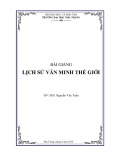
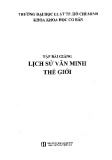

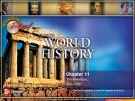
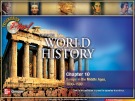
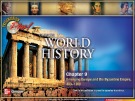
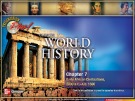
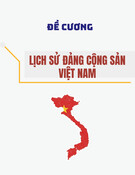
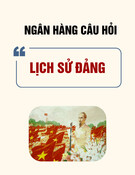







![Giáo trình Tổ chức và Quản lý Hoạt động Văn hóa Thông tin Cơ sở (Ngành Quản lý Văn hóa - Trung cấp) - Trường Trung cấp Mỹ thuật - Văn hóa Bình Dương [Mới nhất]](https://cdn.tailieu.vn/images/document/thumbnail/2025/20251110/kimphuong1001/135x160/17861762748492.jpg)





